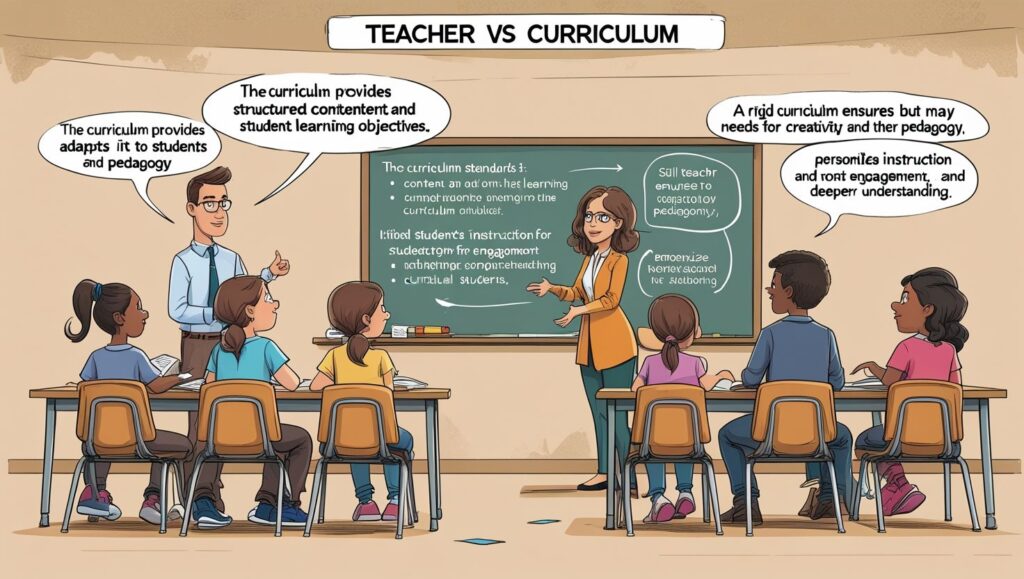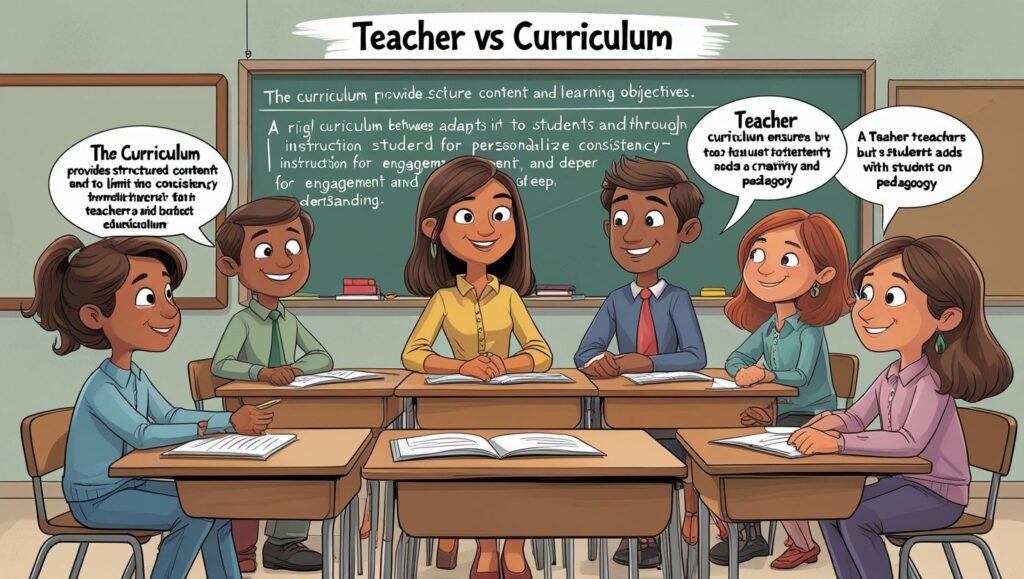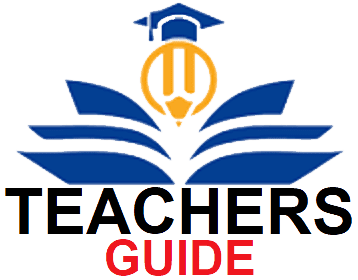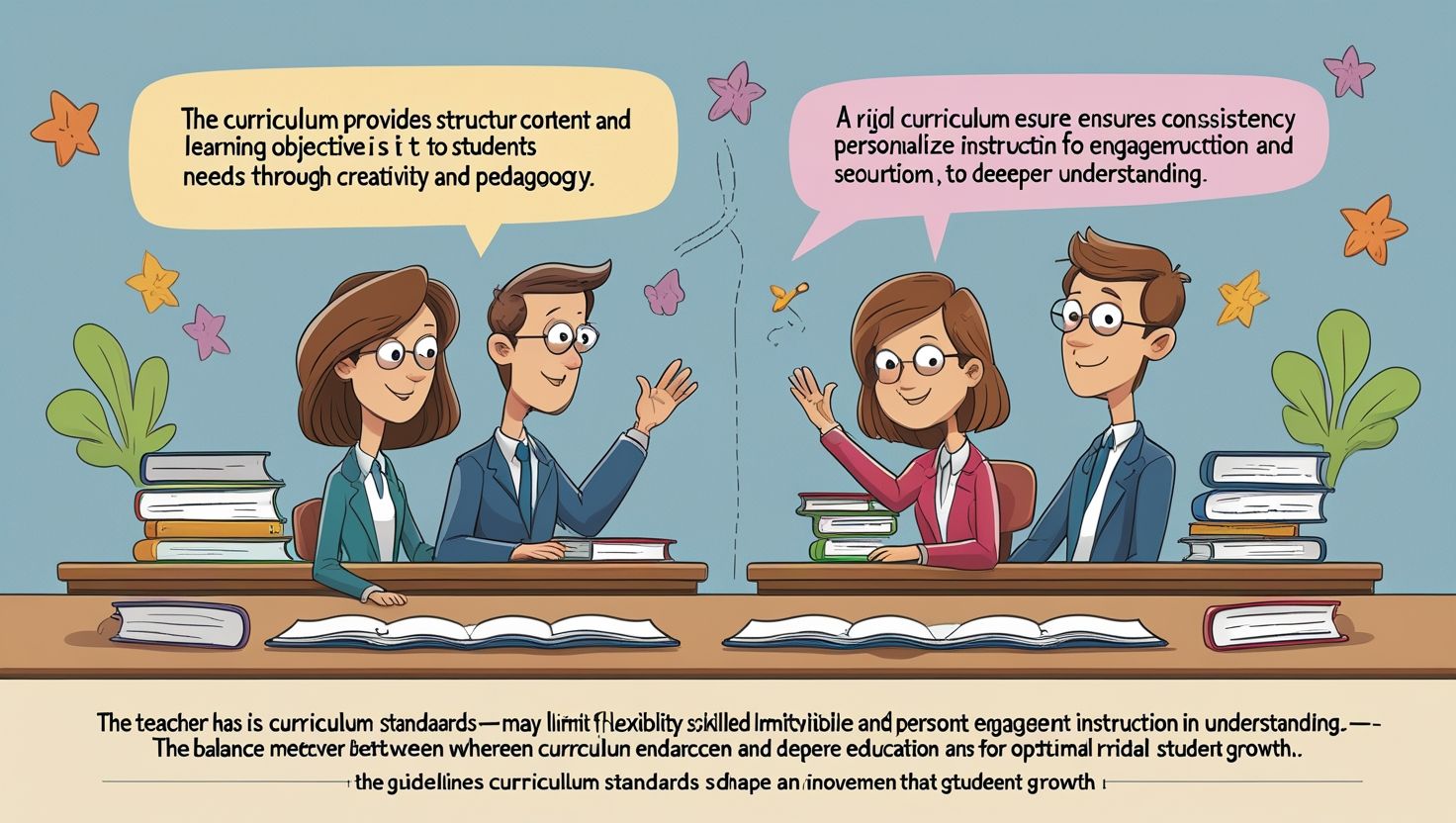1. Introduction:
Teacher vs Currilum in Education, The debate of teacher versus curriculum has long been central to educational discourse. Both are critical pillars that shape the learning experience. The curriculum defines what is taught, establishing a standardized framework of knowledge and skills that students are expected to acquire. Teachers, on the other hand, bring this content to life, delivering lessons with passion, adapting to individual learning needs, and cultivating critical thinking. However, conflict arises when one is emphasized over the other. If too much focus is given to curriculum, education may become rigid and mechanical. Conversely, placing all emphasis on the teacher might result in inconsistent learning outcomes across institutions. Modern education systems struggle to balance these forces: designing curriculum frameworks that allow flexibility, while also training teachers to effectively interpret and implement them. This article delves into the individual roles, strengths, weaknesses, and interplay of both teachers and curriculum, ultimately advocating for a harmonious balance that enriches student learning and meets contemporary educational demands.
2. Historical Evolution of Curriculum-Centric Education
Curriculum-focused education emerged from the need to systematize learning. Historically, during the Industrial Revolution and post-war eras, nations aimed to produce a literate and skilled workforce. Centralized curriculum planning was implemented to ensure uniformity in education. Textbooks, syllabi, and national policies laid out strict subject content, often leaving little room for teachers to innovate. In this model, the curriculum served as the blueprint, and teachers acted more like transmitters than facilitators. While this ensured consistency and accountability, it often overlooked cultural, social, and individual diversity. The “one-size-fits-all” model produced measurable outcomes but sometimes lacked creativity and responsiveness to student needs. Over time, educational theorists like John Dewey criticized this rigidity and advocated for a more child-centered, teacher-sensitive approach. However, despite criticisms, many countries still favor curriculum-centric models, especially in standardized testing systems. The historical reliance on curriculum shows how deeply entrenched institutional frameworks can be and illustrates the challenge of rebalancing authority between centralized planning and classroom flexibility.
3. Teacher’s Role in Shaping Learning Experiences
Teachers are more than content deliverers—they are facilitators of thinking, mentors of behavior, and agents of change. Their role involves interpreting the curriculum, understanding students’ individual needs, and adapting content delivery accordingly. A teacher’s tone, attitude, creativity, and interpersonal skills significantly influence how learners engage with material. While the curriculum may dictate what is to be taught, the teacher determines how it is taught. For instance, two teachers may use the same lesson plan yet create entirely different learning experiences. Good teachers tailor their methods to meet diverse learning styles—visual, auditory, kinesthetic—thus enhancing comprehension. They also play a pivotal role in promoting socio-emotional skills, which no curriculum can fully encapsulate. Furthermore, teachers mediate the cultural and moral transmission within classrooms, acting as role models. Thus, their influence goes beyond textbooks, shaping students’ character, confidence, and future aspirations. When teachers are empowered with professional development and pedagogical freedom, they enrich the educational journey far more than a rigid curriculum alone ever could.
4. Curriculum: Framework and Standardization in Education
The curriculum serves as the formal guide for educational content, objectives, competencies, and assessment standards. It ensures that students across different regions receive a uniform quality of education, regardless of personal or institutional variation. Through clearly defined learning outcomes, the curriculum provides a roadmap for both students and teachers. It structures the sequence of topics, sets academic benchmarks, and often integrates national or global values into education. For example, science curriculums may embed sustainability goals, while language curriculums might promote multicultural understanding. Standardized assessments, derived from curriculum goals, help measure learning achievements and ensure accountability. Moreover, curriculums are designed with expert consultations, incorporating research-based practices and socio-economic relevance. However, their rigidity can be a drawback when not adapted to local contexts or evolving educational needs. A curriculum that does not account for emerging technology, mental health education, or life skills may become obsolete. Nonetheless, its function as a foundational pillar for educational consistency and equity is irreplaceable.

5. The Interplay Between Teacher and Curriculum
While teachers and curriculum are often viewed in contrast, the most effective educational systems promote their synergy. A well-designed curriculum offers structure, while a capable teacher breathes life into it. When teachers are involved in curriculum development or review, they bring practical insights that make it more adaptable and relevant. In classrooms, teachers interpret curriculum objectives in ways that resonate with their students, incorporating real-life examples, discussions, and diverse media to enrich understanding. Moreover, feedback loops between classroom practice and curriculum planners are essential for updating content and pedagogical approaches. Teachers also serve as the bridge between abstract curriculum ideals and real-world application, helping students relate lessons to their everyday lives. For example, a history curriculum might list events and dates, but a teacher connects those facts to students’ local contexts or contemporary issues. Therefore, rather than debating supremacy, it is more productive to explore how both can collaborate for better learning outcomes.
6. Impact on Student Learning and Motivation
Student engagement and achievement are significantly influenced by how well teachers implement the curriculum. A rigid curriculum, delivered mechanically, may lead to boredom, confusion, or anxiety among students. Conversely, a dynamic teacher, even within a strict curriculum, can create an inspiring environment. Motivation stems not just from content but from how it is presented. Students are more likely to engage with subjects when teachers connect lessons to their interests, experiences, and goals. For instance, incorporating digital tools or project-based learning within curriculum frameworks can make lessons more interactive. Teachers can also adjust their pace based on class comprehension, a flexibility not provided by static curriculum charts. Emotional safety, encouragement, and classroom culture—elements nurtured by teachers—are also critical to motivation. Thus, while curriculum outlines what students should learn, teachers influence whether they want to learn. The best learning happens when structured content is delivered with empathy, enthusiasm, and adaptability.
7. Challenges of Curriculum Overload vs. Teacher Innovation
Curriculum overload occurs when too many topics are packed into limited instructional time. This leaves little room for reflection, creativity, or deeper understanding. Teachers often feel pressured to “cover the syllabus” rather than “uncover meaning.” The result can be superficial learning, rote memorization, and student stress. On the other hand, teachers with innovative approaches may find themselves restricted by prescriptive syllabi or exam-focused curriculums. When creativity is discouraged in favor of compliance, education loses its transformative power. Balancing content breadth and depth is a major challenge. Teacher innovation, such as integrating cross-curricular themes or applying experiential learning, often needs curricular flexibility. Unfortunately, not all systems support such autonomy. In exam-driven cultures, deviation from curriculum norms can even be penalized. Thus, reforms must focus on allowing space within curricula for teacher-led exploration, while also providing professional training on how to align innovations with prescribed outcomes. Otherwise, the friction between curriculum demands and teacher creativity will continue to undermine student learning.

8. Policy Implications and Institutional Priorities
Educational policies often tilt toward curriculum reforms—new syllabi, textbook updates, and assessment redesigns—without parallel investment in teacher development. While curriculum frameworks may be visionary, their success largely depends on teacher readiness and classroom realities. Policy-makers must understand that curriculum reform alone cannot transform education. Teachers need training, resources, and autonomy to implement changes effectively. Institutional priorities should also reflect this balance: equal emphasis on curriculum design and pedagogical skill-building. Moreover, teacher feedback should inform future curriculum revisions, ensuring relevance and feasibility. In many regions, bureaucratic top-down decisions result in disconnected content that teachers struggle to deliver meaningfully. Collaborative policy models, where teachers are stakeholders, not just executors, yield better results. Education ministries and boards must invest in both curriculum content and delivery mechanisms. This includes infrastructure, teaching aids, and digital integration. Therefore, aligning curriculum goals with teacher support systems is not only logical but essential for long-term educational progress.
9. Global Perspectives and Case Studies
Globally, countries adopt varied approaches to balancing curriculum and teacher influence. Finland, for instance, grants teachers significant autonomy while maintaining a broad national curriculum. Teachers are trusted as professionals, leading to high student performance without high-stakes testing. In contrast, countries like Japan and South Korea emphasize rigorous curricula with standardized exams, often resulting in high academic achievement but increased student stress. The U.S. follows a decentralized model, where individual states control curriculum, leading to variability in teacher roles and student outcomes. Case studies show that where teachers are empowered—through training, respect, and input in policy—learning improves. For example, in Singapore, curriculum updates are followed by nationwide teacher training programs, ensuring effective implementation. These global examples reveal that success lies not in choosing between curriculum and teachers, but in harmonizing the two. By studying international practices, educational planners can adopt hybrid models that honor the curriculum’s structure while nurturing teacher creativity and student-centered learning.
10. Future Directions: A Balanced Vision for Education
The future of education must move beyond the binary of teacher versus curriculum. A balanced vision acknowledges that while curriculum provides the scaffold, teachers are the architects of meaningful learning. Technology is also reshaping this landscape, offering new ways to deliver content and assess understanding. Curriculums must evolve to include skills like critical thinking, collaboration, and digital literacy—areas where teacher guidance is irreplaceable. Professional development should be continuous, equipping teachers with the skills to personalize learning, even within standardized frameworks. Furthermore, involving teachers in curriculum design will ensure practical relevance and smoother implementation. Hybrid learning models, combining digital platforms with in-person instruction, require adaptable curricula and digitally skilled teachers. In this future vision, schools function not as curriculum factories, but as learning communities where teachers and content co-create educational experiences. Equity, flexibility, and innovation will be the cornerstones. In this vision, the question is not who is more important—teacher or curriculum—but how both can thrive together to serve the learner.
11. Conclusion:
In conclusion, the teacher and curriculum should not be seen as opposing forces but as partners in a shared mission: empowering learners. Each brings unique value—curriculum offers structure, consistency, and educational goals, while teachers provide context, connection, and creativity. When one dominates the other, learning suffers; when both are balanced, education flourishes. The ideal educational model recognizes the curriculum as a guiding framework and the teacher as a dynamic facilitator. Policymakers, institutions, and society must strive to support this balance through inclusive curriculum development, teacher training, and classroom autonomy. Global examples show that such equilibrium leads to improved learning outcomes and student well-being. As the world evolves, so must our understanding of education—not as a content-delivery system, but as a holistic, interactive process. The future lies not in choosing between teacher and curriculum but in strengthening their collaboration for the benefit of every learner.
References
- Dewey, J. (1938). Experience and Education. New York: Macmillan.
- Fullan, M. (2007). The New Meaning of Educational Change. Routledge.
- OECD (2020). Education Policy Outlook 2020. OECD Publishing.
- Darling-Hammond, L. (1997). The Right to Learn: A Blueprint for Creating Schools that Work. Jossey-Bass.
- Sahlberg, P. (2011). Finnish Lessons: What Can the World Learn from Educational Change in Finland? Teachers College Press.

